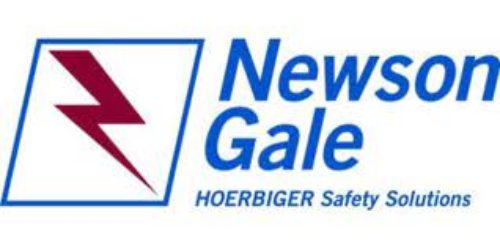Memaksimalkan KESELAMATAN DI AREA BERBAHAYA karena Muatan Elektrostatis

1. Pastikan semua operator dan manajer dilatih bekerja secara aman di area yang mudah terbakar. Sangat penting bahwa mereka memahami karakteristik dan bahaya produk yang mudah terbakar dan prinsip-prinsip pengendalian statis.
2. Pastikan semua peralatan listrik sesuai untuk digunakan dalam atmosfer yang mudah terbakar
3. Pastikan Alat “Lift Truck” dan kendaraan lain yang digunakan di sekitarnya adalah anti-ledak yang dilindungi sesuai standar yang sesuai.
4. Pastikan Stiker (Warning Sign) “Dilarang Merokok”, ” BAHAYA MUATAN STATIK” dan “EX” jelas ditempel ditempat strategis.
MEMINIMALKAN AKUMULASI MUATAN STATIK
1. Pastikan operator disediakan dengan Sepatu yang statis-disipatif (SD). Sarung tangan, jika memungkinkan, juga harus bersifat statis-disipatif.
2. Pastikan lantai harus konduktif dan di”grounding”kan dengan baik.
3. Pastikan sepatu statis-disipatif selalu dipakai dan tetap dalam kondisi baik dengan menggunakan TEST RESISTANSI atau FOOTWEAR TESTER sebelum masuk ke daerah yang mudah terbakar.
4. Pastikan semua kontainer, pipa, selang, pabrik dll, yang konduktif atau sttic-disipatif, terhubung satu sama lain dan membumi.
5. Pastikan Klem Grounding yang bagus tersedia yang,untuk memungkinkan Mobile Container digroundingkan sebelum mentransfer produk atau pencampuran.
6. Jika memungkinkan, pipa langsung terhubung dari penyimpanan ke titik penggunaan.
7. Menghilangkan dari meminimalkan produk “jatuh-bebas” dari ketinggian.
8. Jika memungkinkan , Kecepatan pompa tetap rendah.
9. Bila menggunakan bahan plastik, seperti drum, tong, liners dan selang di daerah combusitble, mereka harus statis-disipatif dan dibumikan dengan baik.
10. Bila menggunakan FIBXs (Tas Besar) di daerah yang mudah terbakar atau dengan debu berpotensi mudah terbakar atau serbuk, mereka harus “Tipe C” statis-disipatif dan dibumikan dengan baik.
11. Penggunaan aditif anti-statis harus dipertimbangkan dalam cairan konduktivitas rendah jika mereka tidak membahayakan produk.
MENJAGA PRAKTEK KERJA YANG AMAN
1. Pastikan semua operator, manajer dan pemeliharaan baru staf terlatih dalam kerja yang aman dengan produk yang mudah terbakar.
2. Mengembangkan ditulis “Sistem-Aman-Bekerja” untuk penanganan produk yang mudah terbakar.
3. Pastikan semua Straps grounding, klem, kabel dan sistem pemantauan secara teratur diperiksa dan dipelihara. Hasil inspeksi harus dicatat. Peralatan yang secara intrinsically aman harus digunakan untuk menguji kontinuitas.
4. Pastikan lantai tetap static-disipatif dan non-isolasi.
5. Pastikan semua kontraktor dikendalikan secara ketat dengan Sistem “Izin-Untuk-Bekerja”
6. Dimana ukuran besar dan konduktif serta peralatan bergerak, seperti IBCs stainless steel, Truk Tangki atau “Tipe C” FIBCs bisa menjadi insolated dari tanah, penggunaan Sistem Pemantauan Grounding, dengan interlock sangat dianjurkan untuk dihubungkan dengan peralatan serta pompa ataupun katup(Valve), untuk memastikan bahwa mereka tidak dapat menimbulkan bahaya statis.
_______________________________________________
MAXIMISE SAFETY IN THE AREA
1. Ensure all operators and managers are trained in safe working with flammable products. It is vital that they understand the characteristics and dangers of flammable products and the principles of static control.
2. Ensure all electrical equipment is appropriate for use in the designated flammable atmosphere
3. Ensure lift trucks and other vehicles used in the vicinity are explosion protected to the appropriate standard.
4. Ensure “NO SMOKING”, “STATIC HAZARDS” and “EX” warning signs are clearly posted.
MINIMISE CHARGE GENERATION AND ACCUMULATION
1. Ensure operators are supplied with static-dissipative (SD) footwear. Gloves, if word, should also be static-dissipative.
2. Ensure floors are adequately conductive and are well grounded.
3. Ensure static-dissipative footwear is always worn and remains in good condition by use of resistance testing before entry into the combustible area.
4. Ensure all containers, pipework, hoses, plant etc., are conductive or sttic-dissipative, bonded together and grounded.
5. Ensure that sufficient, suitable grounding leads and clamps are provided to enable movable containers to be grounded prior to product transfer or mixing.
6. Where practical, pipe liquids directly from storage to the point of use.
7. Eliminate of minimise product free-fall distances.
8. Where practical, keep pumping speeds low.
9. When using plastic materials, such as drums, kegs, liners and hoses in combustible areas, they should be static-dissipative and suitably grounded.
10. When using FIBXs (Big Bags) in combustible areas or with potentially combustible dusts or powders, they should be “Type C” static-dissipative and suitably grounded.
11. The use of anti-static additives should be considered in low conductivity liquids if they do not harm the product.
MAINTAIN SAFE WORKING PRACTICES
1. Ensure all new operators, managers and maintenance staff are trained in safe working with flammable products.
2. Develop a written “Safe System of Working” for the handling of flammable products.
3. Ensure all grounding straps, clamps, wires and monitoring systems are regularly inspected and maintained. The result of inspections should be recorded. Intrinsically safe equipment should be used to test continuity.
4. Ensure -static-dissipative floors remain non-insulating.
5. Ensure all contractors are controlled by strict “Permit-to-Work” systems
6. Where large, conductive, movable equipment, such as stainless steel IBCs, road tankers or “Type C” FIBCs could become isolated from ground, the use of ground monitoring systems, with suitable interlocks to process equipment, pumps or valves is recommended, to ensure that they cannot pose a static hazard.

